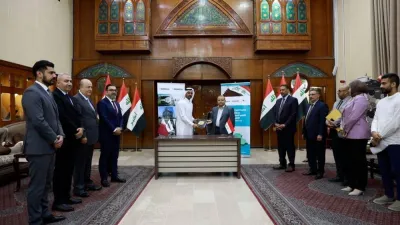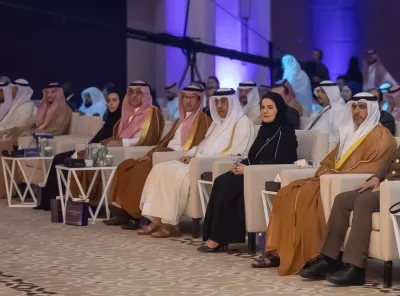Through the pictures that give us a compelling glimpse into the arts,
culture, heritage, and life in Qatar, the photographers have explored
the identity of a nation and its people, writes Anand Holla
As the aptly titled photography exhibition Hawiyati — which means My Identity in Arabic — opened at Hyatt Plaza Shopping Mall, bare walls now adorned with large frames had begun telling stories of Qatar.
Featuring 24 photographers from Qatar, Hawiyati, which delves into the many hues of a prosperous nation, is also a timely exhibition as Qatar today celebrates its National Day; an occasion to appreciate the country’s heritage, and take pride in its enduring culture and soaring progress.
Soon after Minister of Culture, Arts and Heritage HE Dr Hamad bin Abdul Aziz al-Kuwari, inaugurated the exhibition, met the photographers and honoured their efforts with certificates and gifts, shoppers passing by began gathering around the photographs sprawled across the mall’s walls. A conversation had begun.
Organised by Hyatt Plaza Shopping Mall (HPSM) and Al Hosh Art Gallery, the event also captures the essence of Qatar National Day, as it takes visitors through multiple facets of Qatar.
“Through Hawiyati, a unique photo exhibition that portrays the life, culture and rich heritage of our country, we express our love for Qatar. We convey our heartfelt congratulations to the people of Qatar and we wish that Qatar enjoys further security, welfare and prosperity under the wise leadership of His Highness the Emir,” said Feroz Moideen, General Manager of HPSM.
Ghanem Jassim al Ghanem, owner and General Manager of Al Hosh Art Gallery in Souq Waqif, praised the photographers for their creativity. “Community events like this will play a vital role in developing Qatari artists, as it will provide a wonderful platform for our active art loving community to showcase their creativity,” Ghanem said.
What makes the initiative important, also, is that the photographs that have been put on display can be bought from the mall’s customer service desk, and all the proceedings from the exhibition will be donated to Qatar Cancer Society (QCS) to support their charity programmes. The 33 photographs on display are the shortlisted entries from the Hawiyati photography competition.
Nearly a dozen photographs were sold on the opening night itself and it’s not hard to understand why. Be it the beautiful blue of the Arabian Sea across the Corniche, or the Doha skyline that majestically stands on the other end; be it the dreamy reflection of the Fanaar at Souq Waqif in a freshly formed rainwater puddle, or a bunch of camels walking against the setting sun at Mesaieed; be it a devout praying in the Grand Mosque, or dhows wandering in the sea set against skyscrapers — all defining images of Qatar have been showcased in their finest moments.
Other images, equally interesting, include that of a group of little girls playing in the sand on a beach, a boy and his falcon in the dessert, an old deserted structure in the interiors of Qatar, a young boy in soldier’s uniform saluting during a previous National Day parade, and two girls dressed in traditional clothes.
Through these pictures that give us a compelling glimpse into the arts, culture, heritage, and life in Qatar, the photographers have indeed explored the identity of a nation and its people, which befits the title of the exhibition.
The 24 photographers are Hussein al-Shafi, Mohammed Abdullah, Omer Sharif, Nasser al-Kuwari, Ahmad al-Mehairi, Fatima Saleh al-Abdullah, Fatima Fahad al-Mass, Mariam Mohammed al-Abdullah, Hamad al-Mohannadi, Hyyeya al-Mohannadi, Fatma Rashed al-Abdullah, Abdallah Anwari, Abdaziz Ali, Ismail al-Jesseman, Ibrahim Omer, Abdallah
al-Tamimi, Aisha al-Ansari, Aljazi Alshraim, Mayasa Rashid, Nojud al-Kuwari, El Muaiz, Emad Alhaj, Aref al-Ammari, and Shuaa
al-Ghanim.
Soon after the event, Ahmad al-Mehairi, a photographer in his early 20s, spoke about his picture, “I wanted to experiment with light painting and challenge myself by trying out shapes and letters that could capture the spirit of Doha.”
Light painting is a photographic technique in which exposures are made by moving a hand-held light source while taking a long exposure photograph, either to illuminate a subject or to shine a point of light directly at the camera.
Al-Mehairi, however, preferred to light-paint an Arabic phrase at the spur of the moment. “I shot this photograph only the night before I had to submit an image to the competition,” he said, pointing to the photograph that captures a nice, wide view of the Doha skyline at night, as seen from the Corniche, “As I had to shoot this using an extremely slow shutter speed, I had less than 30 seconds to write something in the air so that the camera could capture it just the way I wanted.”
Although he has been experimenting with light-painting for a while now, this was a step-up for al-Mehairi. “So my picture has the phrase ‘Dohat al-khair’ light-painted across the frame because it’s a common nickname for Doha, reminding us how good this place is,” he says, “This image symbolises Qatar.”
Hussein al-Shafi’s picture of an old man making a miniature dhow at his modest workshop takes us to Qatar’s roots. “I had gone to al Bidda village without knowing that I would get this frame,” al-Shafi says.
For his enchanting picture of Fanaar being reflected in a rainwater puddle, El Muaiz, said, “It was raining that day. I was at the Corniche and I wanted to take a nice shot of the Doha skyline. As I passed by Fanaar, I saw water having gathered in small puddles. I couldn’t possibly miss that opportunity. I spent the next 20 minutes waiting for the right moment and angle of reflection. Later, I edited it a bit to attain the right balance of the real and the reflection.”
Emad Alhaj’s both photographs — one at the Zubarah Fort and the other of a mosque — are high on atmosphere. “I am very interested in taking pictures of great pieces of architecture, and especially mosques because they have an amazing feel to them,” he says, “I have documented several mosques all over Qatar and this one was the newest one.”
“It’s called the Mohammed bin Abdul Rahman mosque, and I took this picture around the time it was being inaugurated. When I visited it, I realised that this was one of the most interesting mosques in Qatar. The cloudy sky helped enhance the contrast between the two elements,” says Alhaj, who is also interested in photographically documenting the heritage and culture of Qatar.
Titled Silhouette, Ibrahim Omer’s photograph of camels being walked against the setting sun at Mesaieed, neatly encapsulated the traditional motif of camels in the dessert. “I was at the Sealine beach and I waited for the sunset to reach a point where the camels walking in the sand would be seen as silhouettes while the sun would be seen receding,” Omer said.
While the National Day celebrations will come to a close tonight, it’s through such exhibitions and photographs that the spirit of Qatar will continue to be appreciated and celebrated.



